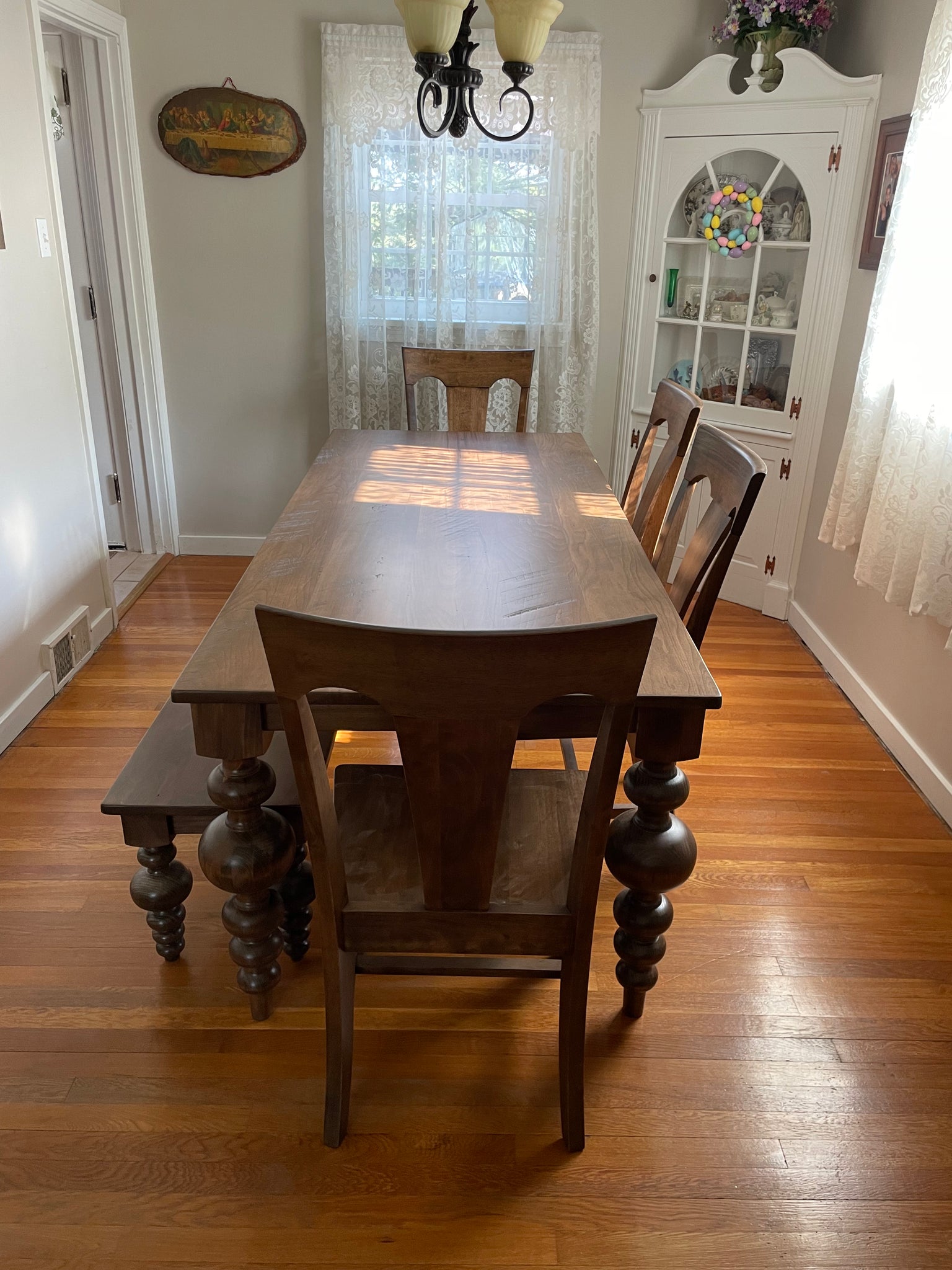Unique Dining Room Table Legs to Change Your Eating Location
Unique Dining Room Table Legs to Change Your Eating Location
Blog Article
An In-depth Consider Dining Table Leg Styles: Locating the Suitable Match
Picking the best dining table leg style is vital for both aesthetic appeal and useful performance. For those with bigger tables, trestle legs guarantee sturdy support, whereas barrette legs introduce a mid-century contemporary ambiance with their minimal layout. The x-shaped legs blend modern design with enhanced security.
Conventional Four Legs
Among the different kinds of table leg styles, the typical four-leg layout stays a classic selection for many homes. This traditional configuration offers an unified blend of performance and visual appeals, making it a perennial fave. 4 legs provide balanced support, guaranteeing the table remains stable and efficient in birthing substantial weight. This is especially advantageous for families that frequently organize large gatherings or utilize their table for several purposes, such as job or crafting.
From a visual viewpoint, the conventional four-leg style can be easily adjusted to various indoor designs. Whether crafted from timber, steel, or a combination of products, these legs can be intricately carved, streamlined and minimalistic, or anything in between. Their flexibility allows them to complement both rustic and modern setups effortlessly.
In addition, the uncomplicated structure of the four-leg design assists in ease of activity and placement within a space. Unlike even more facility bases, this design lessens blockages, giving enough legroom for restaurants. In summary, the standard four-leg eating table leg style marries sustaining beauty with useful functionality, making it a sharp selection for those seeking both form and feature in their dining furnishings.
Pedestal Base
Typically celebrated for its classy and space-efficient layout, the pedestal base is a notable choice to the traditional four-leg arrangement in dining table leg designs. Without corner legs, diners are afforded higher flexibility of motion, making it an optimal selection for round and oblong tables that promote even more intimate and comprehensive events.
The main column itself uses a canvas for complex styles and imaginative expressions, adding an aspect of visual rate of interest under the table. In recap, the pedestal base integrates functionality with design, making it a fine-tuned and useful choice for varied eating environments.
Trestle Legs
Trestle legs give a robust and timeless foundation for eating tables, characterized by their horizontal cross-bracing and tough support beams. Stemming from middle ages times, this style has developed yet preserved its important framework, making it a seasonal fave in both traditional and modern settings. The central trestle beam of light, frequently sustained by 2 or even more vertical posts, provides outstanding stability, permitting bigger table lengths without the need for additional legs.
A considerable advantage of trestle leg tables is the ample legroom they use. Unlike tables with 4 corner legs, the lack of obstructions at the table's edges provides unobstructed area for chairs and diners, boosting convenience and access. This makes trestle tables suitable for suiting bigger gatherings, whether in a dining-room or a reception hall.
The visual versatility of trestle legs is significant. Offered look at this web-site in a variety of products such as wood, metal, and composite, they can be completed to complement a vast array of interior styles. From rustic farmhouse to smooth modern-day styles, trestle legs can be personalized to fit individual tastes. Their enduring allure and practical benefits make trestle legs a compelling option for those seeking both style and functionality in their table.
Hairpin Legs

The appeal of barrette legs depends on their simplicity and versatility - dining room table legs. Offered in a variety of materials, consisting of steel and brass, they can be finished in numerous shades to complement different interior designs. Whether paired with a rustic wooden table top or a modern glass surface area, barrette legs easily mix functionality with a touch of classic appeal
Longevity is an additional significant attribute of barrette legs. Despite their fragile look, these legs are engineered to birth significant weight, guaranteeing the dining table remains stable and protected. Additionally, they are fairly very easy to set up, making them a popular option for do it yourself lovers and professional furnishings makers alike.
X-Shaped Legs

Constructed click for more info from materials such as steel, wood, or a mix of both, X-shaped legs can be tailored to match different design preferences. Steel legs frequently lend a sleek and commercial feeling, ideal for loft-style houses and modern-day eating areas. On the various other hand, wood X-shaped legs offer a warmer, more rustic appeal, ideal for farmhouse or diverse interiors. The versatility in materials permits house owners to personalize their table to much better fit their total layout scheme.
Moreover, the engineering behind X-shaped legs makes sure also Continued weight distribution, decreasing the risk of wobbling and improving resilience. This makes them particularly appropriate for larger eating tables that call for added support. In essence, X-shaped legs blend functional design with modern-day aesthetics, making them a timeless choice for varied dining atmospheres.
Final Thought
An extensive understanding of dining table leg designs discloses the unique qualities and benefits of each design. Trestle legs guarantee robust support for larger tables, and hairpin legs introduce a mid-century contemporary aesthetic.
Report this page